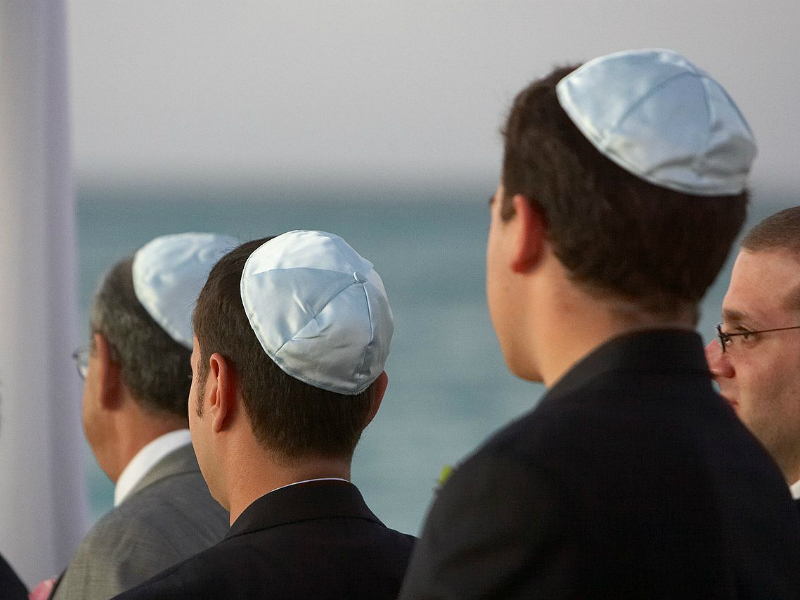There’s an old joke that goes like this: Mr. Goldberg was visiting China when he happened upon an old synagogue. He put on a tallit and sat down to pray. He noticed, though, that the other people there seemed confused by his presence.
After the service, an elderly Chinese man came up to Goldberg to welcome him. “We are so happy to have you here,” said the man, “but tell me: how do you know the words of the Jewish prayers?” “I grew up with these prayers. I chanted them at my Bar Mitzvah,” Goldberg answered.
The old man peered closely at Goldberg. Then with a shrug of his shoulders, he replied, “Funny, you don’t look Jewish.”
Many of us have a tendency to assume that Ashkenazic equals Jewish – that last names like Rosen and Goldberg are Jewish names and that matzah balls and borscht represent authentic Jewish experience. When I was little, my grandmother used to kiss my keppele, pinch my punim, and occasionally threaten to potch in tuchis. I figured that was just how Jews talked. Turns out that my eight-year-old self was making some seriously “Ashkenormative” assumptions.
You can understand why many of us this think this way. After all, the majority of Jews in North America today have their roots in eastern and central Europe. But we are not monolithic, and such assumptions – even unwitting or unconscious – can do damage to our community and to those seeking to be part of it.
Consider: if a visitor named Goldberg walked into one of our synagogues, we probably wouldn’t hesitate to offer them an aliyah during services. But if their name was O’Reilly or Youssef – or if their skin was black or they had Asian features– we’d be less likely to offer honours and more likely to ask questions.
I’ve heard of converts’ Jewishness being questioned right in the sanctuary (“Which of your parents was Jewish?” Which rabbi converted you?”). I’ve met people of colour – both Jews and spouses of Jews – who avoid synagogues because they were treated like outsiders. I’ve seen rabbis tell potential Jews-by-choice that in order to be accepted in the Jewish community they will need to learn to pepper their speech with Yiddish words and their cooking with eastern European foods. As if eating gefilte fish and having a bubbe were central components of Jewish identity.
The result is a de-facto two tiered system in which European Jews – and those who can pass as European Jews – have an often-invisible level of privilege within our communities, while people of colour and converts are more likely to be deemed suspect or to be excluded. At the recent Biennial Convention of the Union for Reform Judaism in Chicago, there were several reports of Jews of colour being treated differently than their counterparts: they were disproportionately asked to produce ID when picking up participant badges; some reported being eyed warily by fellow participants in the hallways; a few were even asked to clean up spills (on the assumption that they were part of the staff as opposed to attendees).
The irony is that inclusion is a central value in Reform Jewish thinking – in fact, URJ president Rabbi Rick Jacobs’s keynote address at that very conference called on Reform Jews to “extend the tent of Jewish life” to those who are often excluded due to ethnic background, sexual orientation, or intermarriage. (Rabbi Jacobs pointedly addressed the issue a few days later in a Facebook post in which he called on Jews to “acknowledge that racism isn’t only “out there somewhere.”) Such incidents are a reminder that even in Jewish communities that are committed to inclusiveness, sometimes we have to work hard to be aware of our implicit biases.
In the 21st century, there is no such thing as “looking Jewish.” Demographic trends such as conversion, intermarriage, and adoption are changing the face of the Jewish people. Let us open our tent to all of those who wish to come inside, and let us acknowledge and celebrate the incredible diversity of our people.
Author

Rabbi Micah Streiffer leads Kol Ami, a Reform congregation in Thornhill, Ont.
View all posts







